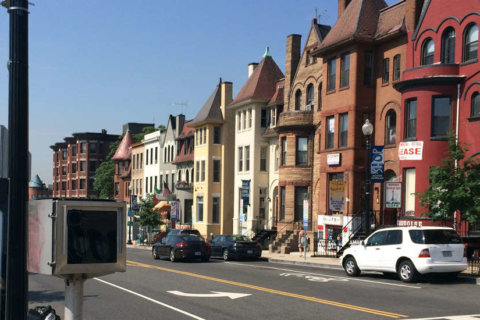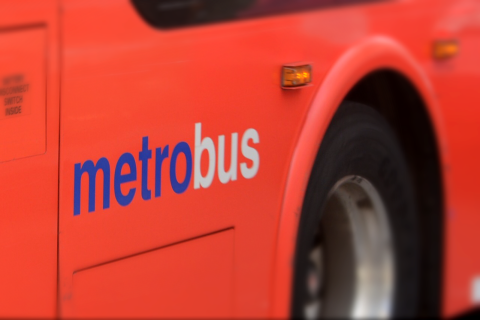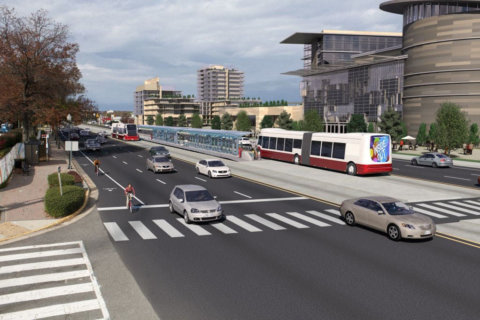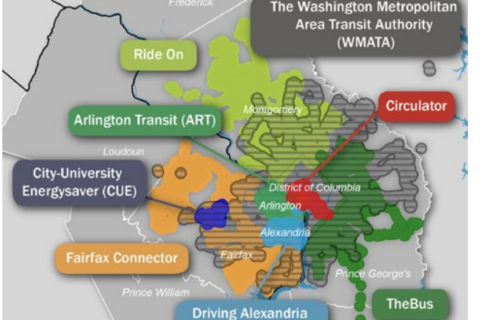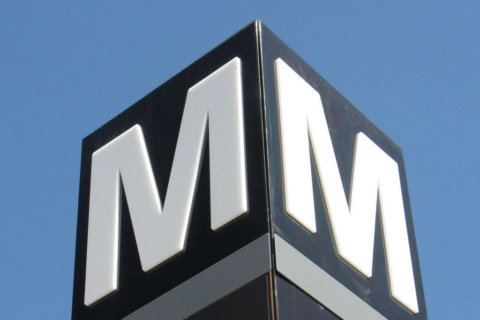Jammed downtown streets near the White House will get bus lanes this summer in place of current rush-hour lanes of traffic.
“H and I Street Northwest, and generally east-west travel through … downtown, is congested and slow for all users, but it’s especially slow for bus riders,” District Department of Transportation Planner Megan Kanagy said in an interview.
Bus lanes are planned starting around June 3 on I Street in Northwest from 13th Street (Franklin Square) to near 21st Street/Pennsylvania Avenue, and on parallel H Street in Northwest from near Pennsylvania Avenue past Lafayette Square to 14th Street.
The rules would apply between 7 a.m. and 10 a.m. and 4 p.m. and 7 p.m. on both streets.
Dozens of bus routes from across the District and the region, serving tens of thousands of riders, converge and overlap in that area. The routes serve about 1 in 5 of all Metrobus riders in the District alone.
DDOT describes the lanes as a temporary pilot plan that would run through the end of September fueled by long-term problems.
“Buses are, at times, traveling slower than a walking speed,” Kanagy said.
In addition to delaying commuters, the congestion significantly adds to taxpayers’ cost to operate bus service.
In an effort to get these bus lanes to actually work, as opposed to the temporary lanes on Rhode Island Avenue last summer, which many drivers ignored, DDOT plans to paint the lanes red to make clear where drivers are and are not allowed. There will also be other pavement markings and signs.
“Enforcement is going to be very important to the success of this pilot,” Kanagy said.
Discussions are underway among the Department of Public Works to enforce parking rules, the D.C. police to enforce other traffic rules, and the Department of For-Hire Vehicles to try to ensure Uber, Lyft and similar drivers do not stop in the middle of travel lanes, as they frequently do now.
The bus lanes would replace a current general travel lane next to the curb but would not remove any parking spaces, since there are already rush-hour parking restrictions on H and I streets. Those restrictions would be extended by 30 minutes.
Vehicles besides buses will be permitted to use the lanes to make right turns; taxicabs are allowed in, and school buses, charter buses and bikes are also due to be permitted.
While the lanes are in place, DDOT plans to collect data on safety — bus speeds and service consistency, and overall traffic impacts — to determine whether some or all of the changes should become permanent.
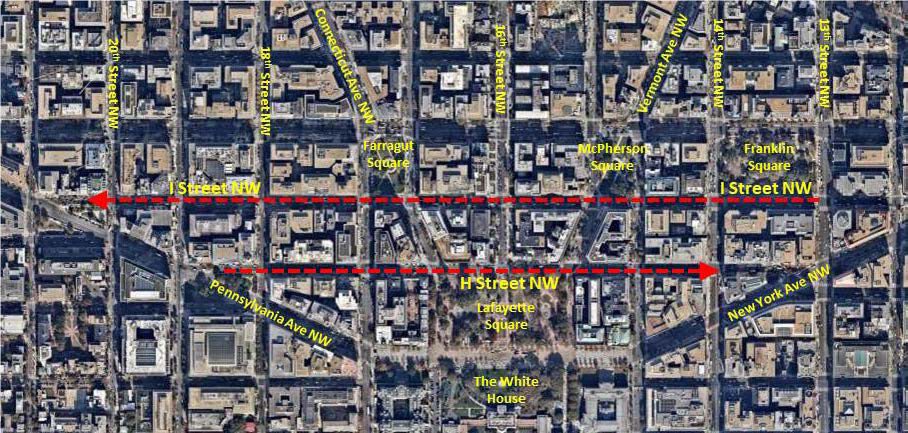
Since right turns will be allowed in the lanes, though there is some concern that intersections with lots of people in the crosswalks could end up with long lines of drivers waiting to turn, slowing down buses. In the future, that could be addressed with turn restrictions at certain intersections, depending on traffic analyses.
Buses are expected to continue to serve all current stops.
A 2013 study found bus lanes could cut regular bus travel times 30 to 70 percent, which would save people a significant amount of time and save the region a significant amount of money, since more bus service could be provided with fewer resources.
The timing of the new lanes is based in part around when Metrobus operators change routes in order to allow proper training and notification of where the lanes will be, how to best use them and how to report any problems.
The temporary bus lanes are also meant to help traffic this summer when there is some additional bus service to and from Virginia due to the Metro shutdown of six Blue and Yellow Line stations from May 25 through Sept. 2.
Permanent bus lanes in this area have been suggested or in planning for years in slightly different forms, but a pilot program allows action somewhat more quickly. In other areas, such as 16th Street, permanent bus lanes planned have taken even more time to put in place.
Other cities have used similar pop-up bus lanes to show the benefits of bus lanes in specific corridors to advance some projects.

